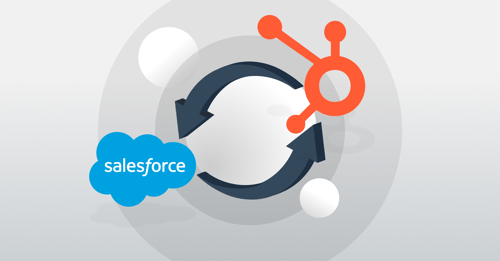Buyer persona? What is a buyer persona?
A buyer persona is, according to HubSpot, a semi-fictional representation of your ideal customer. It’s based on market research, actual data about your existing customers, and a few (educated) assumptions. It helps you to understand and relate to an audience that you want to market your products and services.
Pardon references to The B2B Marketing Lab, this video was created before we merged with MPULL to form Huble Digital.
Buyer personas are one of the most (if not the most) important parts of any marketing strategy.
By forensically analysing trends, behaviours, similarities and patterns amongst your target audience, you can then create a marketing and sales strategy built around their objectives, day-to-day challenges and ‘pain points. By creating prospect-orientated marketing campaigns and content, you show your target audience you understand their business pains and problems intimately, encouraging them to engage further with your business. Why are they important?
Buyer personas are situated at the heart of any marketing strategy, and throughout every part of the Inbound process. If you can’t engage with your potential customers in a relevant and contextual manner, you will lose their trust and interest. Once you have lost someone’s trust and interest, it’s hard to get that back. (You can’t make a second first impression!)
And that’s exactly why buyer personas are important.
Buyer personas allow you to focus on the challenges and pain points of your prospects and provide you with an intricate and precise stream of marketing power to hit the right people at the right time, with the right content. Right? Good stuff.
But more so than anything else, buyer personas inform you of what your business should be doing to help potential customers. Without buyer personas, we wouldn’t know what content to create, which material to share, how we should direct our marketing efforts or where we can improve our presence. They are the context of the narrative, the framework which houses our efforts. They are the compass that determines the direction of our journey and where we should be going.
Remember, the purpose of constructing buyer personas is so that you know exactly who to attract, who you want to delight with your astoundingly good content and insight and, eventually, get on board with your business.
Furthermore, having concise buyer personas helps you to segment your audience and contacts – allowing you to deliver forensically accurate, targeted messaging. In a time of information overload, you want to be specific and detail orientated. The more personalised and accurate you can be with your marketing and content, the easier it is to break through the clutter of information online and engage with your target audience.
Check out our big fat guide to B2B Content Marketing Strategy for more information on how your buyer personas can be used to create amazing content (including where you should start).
Cool right? Who would have thought that a bunch of data and analytics could be turned into something so useful!
So, how do you create a buyer persona?
Buyer personas require time, patience, strategy and an inquisitive mind. In order to construct the theoretical framework which is your ‘ideal’ buyer persona, you need to question yourself and your business to define just who would be interested in what you have to offer.
You need to be methodical and thorough with your questioning and analysis, as the greater level of detail you have, the more variables you can assess and cultivate solutions for.
You are probably wondering what kind of questions and analysis you need to be doing right? No problem, we can help (HubSpot can also help – they have a great tool called MakeMyPersona which you may find useful).
Generally, the questions you want to be asking initially are the ones that will help you lay out a framework of who your ideal buyers are, questions such as:
-
what they do,
-
what industry they are in and how long they’ve been in that industry,
-
their job title,
-
their business agenda,
-
their qualifications,
-
where they reside,
-
the challenges they face on a day-to-day basis,
-
what triggers them to look for a solution,
-
And what questions they ask the sales team during the sales process.
This will establish the base schematic for your questioning, but it’s important to move beyond the regular questioning context so that you can decipher the entirety of your buyer personas – you need to be able to understand them as people in order to ascertain their needs and desires.
Think about:
-
what activities they like to pursue,
-
how old they are,
-
why they work in the industry they are in,
-
their aspirations and motivations,
-
what they would change about their work or industry if they could,
-
what publications they read,
-
and where they go for news about their industry.
You should also be thinking about how you’ll be communicating your USPs to each persona. You should have a unique sales positioning statement per persona, which focuses on why that persona would benefit from your product or service.
And, if you have a large database of contacts, the information you have collected over a period of time will help you to validate the elements of the buyer personas you are creating. If aspects of your buyer personas align with your actual customers, that’s a sign they are on the correct path. Collect as much information as you can from your existing contacts; their industry, business, demographic, geographical location, experience, job function, business pains and their day-to-day operations, as this will allow you to support the personas you are developing.
It’s important to incorporate different members of your team when creating these buyer personas. Think about who you want to include in this process and who can add value – it’s important to remember that your sales team will have a lot of insight here, as they’re talking to your potential customers every day (you can read our blog about incorporating the sales team into your buyer persona development process here).
If you are a HubSpot user, there are methods to building your personas into your day-to-day use of the HubSpot tool. See our webinar below for all information.
Pardon references to The B2B Marketing Lab, this video was created before we merged with MPULL to form Huble Digital.
Research your personas
Now that you are armed with the above information, you can form a textual or visual framework (whichever helps you to digest information easily) that allows you to see exactly where your buyer persona’s pain points are and how you can relieve them and provide them with solutions to other problems.
If you are using a growth marketing platform like HubSpot, you will be able to manage your buyer personas more easily. The forms you create (you know, those neat little boxes on the right of the screen or at the bottom asking you to subscribe and provide details?) will allow you to ask all the necessary questions and receive the answers you need to venture further. Once a customer registers their interest and subscribes, you can use the information you have acquired to start designing trend maps and find common denominators between the people who visit your website.
Alternatively, you can call up interesting prospects without the intent to sell anything, just to have a conversation and determine exactly what they like about your website, what they know about you, and what you can do better. Think of it as a reflective questionnaire; your aim is to gather as much information as possible to help this person. Don’t sell them anything.
Another element to consider is your website’s analytics. They allow you to decipher the nature of the queries coming into your site, when they visited, what they typed in to get there and how long they stayed on a page. You are probably thinking: why do I need this? It’s a fair question. The answer is: data is key. The more data you can collate about your audience and develop a trend or find consistencies – the easier it will be to construct your personas and integrate them.
In addition, having a common understanding of buyer personas and alignment across the business is crucial, as your buyer personas formulate the core of your content creation and content marketing strategy – which will bring you interested parties, which in turn, will bring you, customers. If both marketing and sales understand the people they are marketing and selling to, campaigns gradually become more effective – enabling you to build great content which drives a particular business goal. This is another great reason to collaborate with your sales team when creating these personas – it will encourage their buy-in to the whole process.
There’s no such thing as too much information when creating your personas (within reason of course) as the more information you have, the more detailed and accurate your personas can be. Surveys are another avenue you can venture down, as you are able to get informative responses and collate statistics which can also inform your buyer persona creation and refinement.
What can I do with my Buyer Persona?
Implement them into your marketing efforts. Everything you do, create or intend should be linked to solving your persona’s problem. They are the embodiment of your ‘ideal customer. Sure, in some cases, your buyer personas will encompass a wider variety of people – but in an age of information abundance and excess, being accurate, not assumptive, is the key to success. Your buyer personas are your marketing bibliography, the people your efforts are linked to, and if you can consistently market your product, business or service to these personas, our experience shows us that your marketing campaigns will bring you success.
What you can do with your newly created buyer personas is to start developing your content, produce targeted advertising and refine all aspects of your marketing to relate directly to these personas and their pain points.
If you have done enough detailed research, you will have a plethora of information that you can use to inform your future efforts.
Check out the video below featuring Guy Washer, our Consulting Director, as he explains how buyer personas can be used.
Pardon references to The B2B Marketing Lab, this video was created before we merged with MPULL to form Huble Digital.
What now?
Get out there. You are armed with the necessary details to research and create your own buyer personas. If you keep the comments above in mind as you pursue your agenda, you will have no trouble finding your audience and eventually engaging with them. Using your buyer personas, you can create personalised content for your audience and start generating high-quality leads!
Huble Digital Buyer Persona Workshops
If you want expert help in developing buyer personas for your Inbound Marketing programme and for your content marketing activity - we run a variety of workshops that may be of interest. First of all, we run buyer persona workshops where we spend a day with your team to build out and document your buyer personas in detail.
Secondly, we run one-day-long content strategy workshops, where we use your buyer personas to then build out a content strategy for your team moving forward. It's important these two things are integrated, and we've seen lots of clients benefit from completing these two workshops at the start of an engagement with our team.
If this is of interest to you, simply book some time with our team who can provide some more details about the workshops for you.








-3.png?width=500&height=320&name=Matt%20-%20imagery%20bank%20(8)-3.png)



